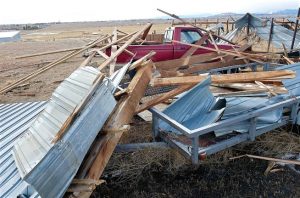A client from Florida and I have been discussing wind speeds. The data we show in our system for his county was for the design wind speed to be 120 mph.
Now where do we get our data? In many cases, direct from Building Departments. In other cases, we use the wind speed maps published in Chapter 16 of the International Building Codes, or the maps from ASCE (American Society of Civil Engineers) 7. The Metal Building Manufacturers Association (MBMA) also lists design wind speeds, by county.
This particular client had also gotten a quote on an all steel building, and they used a design wind speed of 138 mph. At these speeds 18 mph can make a significant difference in structural design.
 Now I know 18 mph does not sound like much, but in the formula to convert from miles per hour, to pounds per square foot of load, the wind speed is squared! While 138 is only 15% faster, the effective load placed on the building is over 32% more. Huge difference.
Now I know 18 mph does not sound like much, but in the formula to convert from miles per hour, to pounds per square foot of load, the wind speed is squared! While 138 is only 15% faster, the effective load placed on the building is over 32% more. Huge difference.
I asked the client if he had discussed the design wind load with his Building Department. He had, and his Building Department did have a solution which I was unfamiliar with. I like learning new things. I learn new “stuff” every day.
His Building Official had him go to: https://www.atcouncil.org/windspeed/ which finds the design wind speed for any given latitude and longitude in the country. What if you do not know the latitude and longitude? On the same website is information on how to look it up! Technology is so great when it works. Many thanks to this Building Official for this new “tool” I can add to my internet reference toolbox.
When Building Departments establish design criteria, those are the “minimum” design loads. When it comes to wind, I would recommend everyone use the link above to check their own actual design wind speeds. In the event the speed shown happens to be greater than your Building Department’s requirements, we would strongly recommend using the higher speed.
Many times it costs very little to increase the wind resisting ability of your new pole building. As more buildings fail due to wind, than any other cause, this is not a place to be penny wise and pound foolish.






